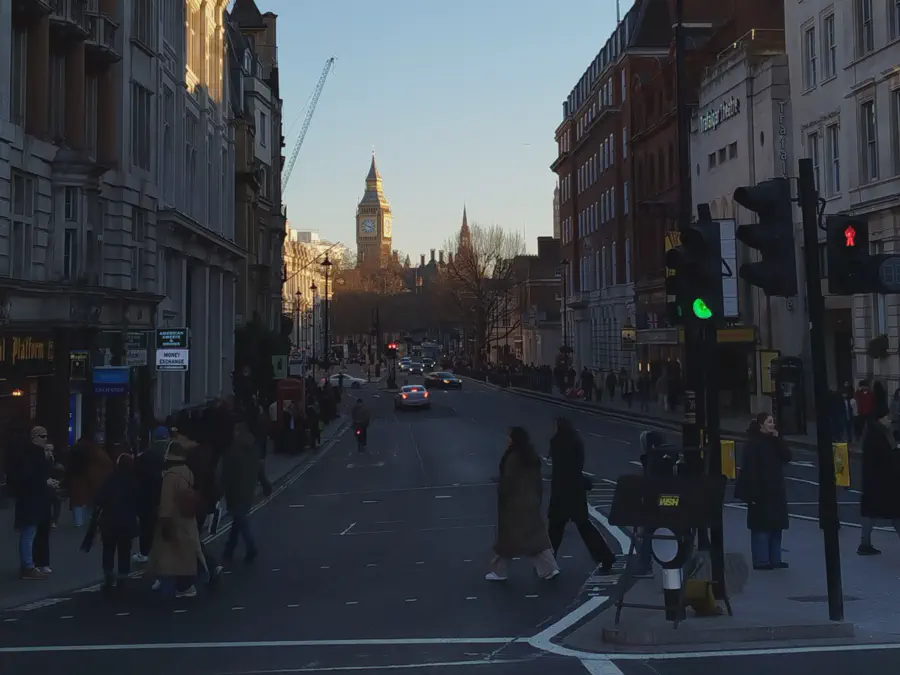What is the best mobile network for the day-to-day in London
Mobile coverage in Central London is often poor. This results in weak outdoor and indoor coverage.

Staying connected in London is essential for work, social life, and day-to-day convenience. However, many people struggle with poor mobile network performance, especially in Central London. Whether it’s unreliable mobile phone services outdoors or a complete lack of signal indoors, finding a dependable mobile network coverage provider can be challenging.
This article explores why mobile phone signal issues persist in London, the challenges Londoners face, and what solutions are available to ensure uninterrupted mobile phone service. We will also compare mobile service providers to help you make an informed choice.
Why mobile phone signal in Central London is so bad?
London presents unique challenges when it comes to designing and delivering reliable mobile network connections. Two key factors make it difficult for mobile service providers to maintain consistent coverage.
First, the bricks used in many of London’s buildings contain a high amount of mica. This material is highly reflective to radio frequency signals, which disrupts mobile network signal strength and makes it difficult for signals to penetrate walls. This problem is particularly evident in historic buildings and older structures across the city.
Second, the ubiquitous London plane trees, known for filtering pollution, also contribute to mobile network congestion. These trees absorb heavy metals from the soil and air, storing them in their leaves and bark. Unfortunately, this also makes them highly effective at reflecting radio signals, leading to micro-fading events. These interference patterns cause unreliable mobile phone services in many outdoor locations, making it difficult for even the best mobile service providers to maintain a consistent mobile network signal.

The Big Ben as seen from Trafalgar Square
Network operators attempt to address these issues by installing additional base stations to enhance coverage. However, base stations require expensive infrastructure and planning permission, which limits their deployment.
Which problems Londoners face?
The main issues residents and visitors encounter are poor mobile phone signal outdoors and an even worse experience indoors.
In many areas of Central London, mobile network congestion is a common problem. With thousands of people trying to access 5G data simultaneously, browsing a website or using online apps can be frustratingly slow. Even in open spaces, signal interference from buildings and trees can make maintaining a reliable mobile network connection difficult.
Indoors, the problem is even worse. Offices, cafes, and homes often suffer from a complete lack of signal due to thick walls and dense urban infrastructure. This makes uninterrupted mobile phone service a challenge unless alternative solutions are in place.
Getting indoor signal in Central London
If outdoor signal in London is unreliable, then indoor signal is often completely unusable. Many people experience dropped calls, delayed messages, and slow mobile internet speeds when inside buildings.
For those who rely on their mobile phone services for work or personal use, this can be a major inconvenience. Mobile service providers attempt to mitigate the issue by offering WiFi calling features, but not all users are aware of or take advantage of these solutions.
Using mobile Internet in the middle of Central London
Using mobile internet in Central London can be an exercise in patience. Due to mobile network congestion in busy areas, even basic browsing can become frustratingly slow.
Many people experience difficulties loading web pages, streaming content, or using navigation apps due to high demand on the network. 5G data is meant to alleviate these issues, but in practice, it is often inconsistent depending on location and time of day.
Alternatives to a robust mobile network connection
Operators attempt to improve service by adding more base stations, but these require significant investment and time to deploy. Instead, users in London should consider alternative methods to stay connected.
One of the best solutions is to have a reliable broadband and WiFi connection at home. Most modern smartphones support WiFi calling, allowing users to make calls and send messages without relying on a weak mobile signal.
Another option is to use public WiFi networks in cafes, transport hubs, and office buildings. While this does not replace a dependable mobile network coverage solution, it can help in situations where mobile phone services are unreliable.
Upgrade your mobile phone experience
To ensure a more reliable mobile network connection in London, choosing the right mobile service provider is essential.
UK SIM-only deals offer flexibility and allow users to switch providers if they experience poor service. Among the major networks, EE and Vodafone provide the most consistent mobile network signal outdoors. However, their performance varies indoors, with some locations favouring one provider over the other. Users may need to test both to find the best option for their specific area.
O2 and Three, on the other hand, tend to be less reliable in Central London, particularly in areas with dense infrastructure and heavy network congestion.
Final thoughts
Staying connected in London can be challenging due to mobile network congestion, signal interference from buildings and trees, and high demand on 5G data services. These factors contribute to unreliable mobile phone services, particularly in Central London.